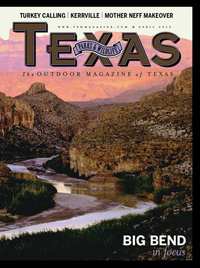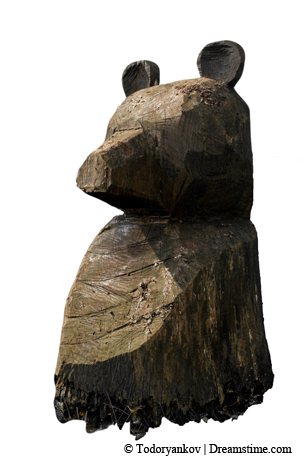
Skill Builder: Keeping Out Critters
How to secure your campsite so wildlife won't invade.
By Dawn Bello
Beyond your campsite, hiking trails wind up the mountainside, each curve beckoning. The green canopy overhead shades you from all but the tiniest diamonds of sunshine.
In the stillness, you spy the rainbow hues of a painted bunting, at home in this idyllic setting.
Not every wildlife encounter is entirely enjoyable. An invasion of ants during a picnic, a nighttime raccoon raid of your cooler or a closer-than-comfortable encounter with a bear may stir up feelings of a different sort.

Luckily, knowledgeable campers can enjoy nature and coexist peacefully with the “natives” during their forays into the wild by following some simple guidelines.
All about smell. Remember that many animals experience the world primarily through their keen sense of smell, not vision. Perfumes and colognes aren’t the only culprits — products like scented toiletries and laundry chemicals can add a scent to you. Wild animals can also detect the snacks in your pack, so be sure to store everything in sealable baggies.
Coolers. In the front country, coolers have become magnets to savvy wildlife like raccoons. These masked bandits have become quite adept at opening even the most intricate latches, while larger animals, such as bears, simply “remodel” or remove accessible coolers. Keep coolers and any bagged or boxed food items tightly sealed and, if possible, stored inside your vehicle overnight.
Tents. Never bring food into your tent. Even minute crumbs can attract anything from a parade of ants (which need only a tiny gap in the zipper opening) to the claws of a raccoon that will quickly tear a new “door” in the fabric.
Bear bags. While backpacking, remove all items with scents, place them in a “bear bag” and hang them at a location outside your campsite. If a wild animal should access the bear bag, you might be out a meal or two, but that’s better than having your expensive backpack ripped to shreds or encouraging wildlife to tour your camp. To keep insects out of your backpack, be sure to remove all attractants and then hang the pack from a tree limb, making it less accessible. If all food is transported in airtight containers, the pack will remain relatively free of irresistible scents.
Hang it. Properly hang your bear bag. If you are at a location where a hook or other hanging device is not available, you may have to make do with a tree limb. Hang a cord utilizing a quick release knot, making sure the bag hangs 12-18 inches below the limb and at least 4 feet from the ground, higher in locations where larger wildlife such as cougars and bears exist.
Divide and conquer. In places with larger wildlife but fewer tall trees, you may have to change your strategy. In these situations, it’s a good idea to divide any possible spoils that may go to larger wildlife, while aiming to thwart the efforts of smaller animals. You can construct two or more bear bag lines outside camp and divide your food between them. This way, you increase your chances of preserving at least some of your meal rations.
Never feed wildlife. Not only is feeding animals bad for the health and digestive system of native species, it renders them dependent on human assistance for food, decreases their natural instincts to avoid humans and increases the chances of unwanted, even dangerous interactions. Let wildlife remain wild.
Stay on marked trails. One scent that wildlife has a natural aversion to is human scent. Trails are heavily laden with the scent of human visitors, so wildlife will often steer clear. This is also a good reason to use established campsites in
the backcountry.
Be aware. Avoid traveling during prime hunting hours, such as dusk and dawn, or during the rutting season. Steer clear of young animals. Often the mother is not far away and could become aggressive if she feels her offspring is under threat of harm.
Be heard. Make some noise so you are heard long before you are seen. In areas where animals such as cougars and bears roam, it’s not uncommon for smart backpackers to travel with bells on their ankles to give wildlife plenty of warning. Chatting with a travel companion also helps, as voices carry.
Remember to practice these techniques during your forays into nature to ensure that your wildlife encounters are all happy ones.
Related stories

